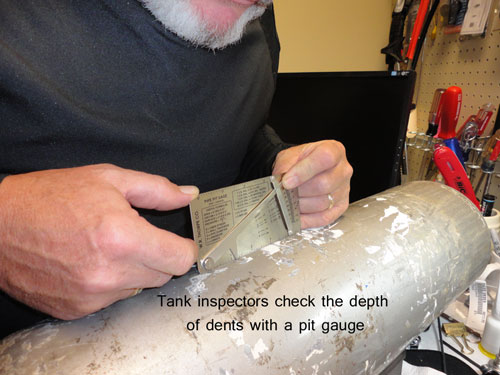We all were taught in class that good buoyancy is valuable not only because it can help protect the diver and the marine environment from harm, but it helps to preserve underwater visibility. Most of all, though, is that it helps the diver to relax and exert less energy, which leads to decreased air consumption.
Once new divers are free of the stress of having to demonstrate their underwater skills, and they start to dive without their instructor, their “blinders” come off. They see themselves as a peer to other certified divers, but recognize that they still have a way to go with regard to their technique. They start to understand the consequences of losing buoyancy and stirring up the bottom of the lake. They see that some divers are floating without finning or struggling to maintain position in the water. Most of all, they wish that they were not always the first one back on the boat with only 500psi.
 |
| Also, if you encounter a plant in a pool, remain calm. Paniked breaths waste air! |
So how does a diver improve his buoyancy?
Number 1: Weights
- Use only as much as you need. Newer divers tend to be overweighted because they have not yet gained enough confidence in their skills to relax. Their breathing rate is increased due to nervousness and the energy expended making lots of unnecessary movements, such as waving their hand to descend or keep themselves from rolling over. The more relaxed the diver, the less weight they need. The added bonus of losing a little lead, is that the diver’s descent rate decreases allowing more time for equalizing. Perform a buoyancy check at the beginning of each dive and reassess your weight needs. With your wetsuit fully saturated with water and no air is trapped inside, deflate your BC and hold a full breath of air. DO NOT MOVE! If you are floating at eye level, then you are close to the right weight. When you exhale all of your breath, ideally, you will float down like a leaf. It will probably be necessary to take an additional quick breath in to allow you to continue to descend, but once you have a couple of feet of water above you, breathe normally and continue to your planned depth.
- Make sure you are using the right configuration of weights. Many BC’s have “trim pockets” which allow the diver to move some of the weight towards his head. This works to keep the diver’s fins in line with his body, rather than trailing below him. When a diver is in a more horizontal position, it has the added advantage of decreasing inadvertent fin contact with aquatic life. Conversely, if the diver tends to be in more of a “head down” position, moving the weights lower by lengthening his BC straps transfers the weigh toward the fins and aids in a more horizontal posture in the water.
Number 2:
Make sure your BC fits. Occasionally, the BC a diver is issued during class or at the rental counter at the dive resort may not be exactly the right fit. If the BC is too large, it will be sloppy when trying to turn or move in the water. At times it can feel as though the tank is sliding off your back. A BC that is too small may not provide adequate lift. The BC should be snug without restricting breathing or movement. Owning your own BC makes it easier to fine tune buoyancy because it is the right size and the fact that the diver is familiar with it will decrease stress.
Number 3:
Breathe slow and deep. Slow, deep breathing is used in relaxation classes for good reason: it has the physiological result of slowing your heart beat and therefore your breathing rate. It also has a calming effect, reducing stress and tension. Remember that your BC is your course adjustment for buoyancy, but your lungs are the fine tune. As a diver inhales and exhales, he moves up and down in the water. When the breathing is steady and the rhythmic up and down movement predictable, divers can anticipate their position and use that to their advantage.
Number 4:
Check your gear. Know that whenever you add or subtract gear, even something as minor as a flashlight, your buoyancy can be affected. Certainly any major change, such as a new BC or wetsuit, or change of environment, such as saltwater to fresh may warrant a significant change in the actual amount of lead you carry, whereas adding a camera may only necessitate shifting weights to a lower or higher position on your body.
Number 5:
Practice. I estimate that when a diver really works on his buoyancy, it takes about 15 good dives to really start mastering the skill. If a diver does not work on it of course it will take longer. Get out there and dive. If you want some expert coaching, choose Peak Performance buoyancy for one of your Advanced Open Water adventure dives, or take the Peak Performance Buoyancy Specialty course.
 |
| Please note: Hovering is not the same as levitation |
If you are interested in improving your buoyancy, we have added another clinic to the schedule. Join us at the Rec Plex on March 9 at 8am. Prior registration is required. Stop in at the shop and get signed up! As always, please like us on Facebook, share this blog on Twitter or leave a comment and give us some feedback. We would love to hear from you! Tune in next week for “6 things you need to know so you won’t be “that guy” on the dive boat.”








